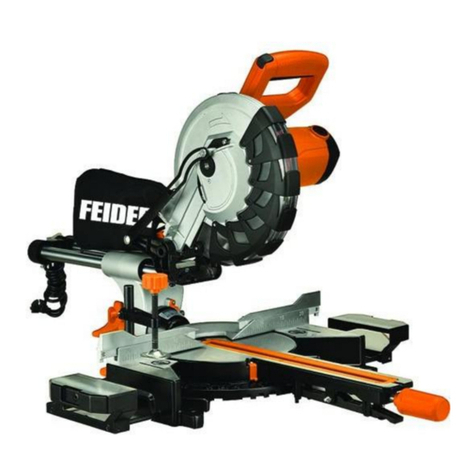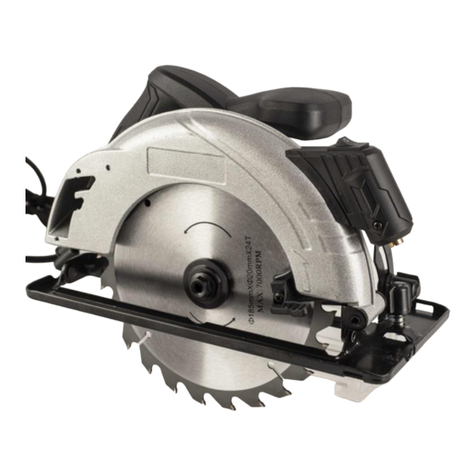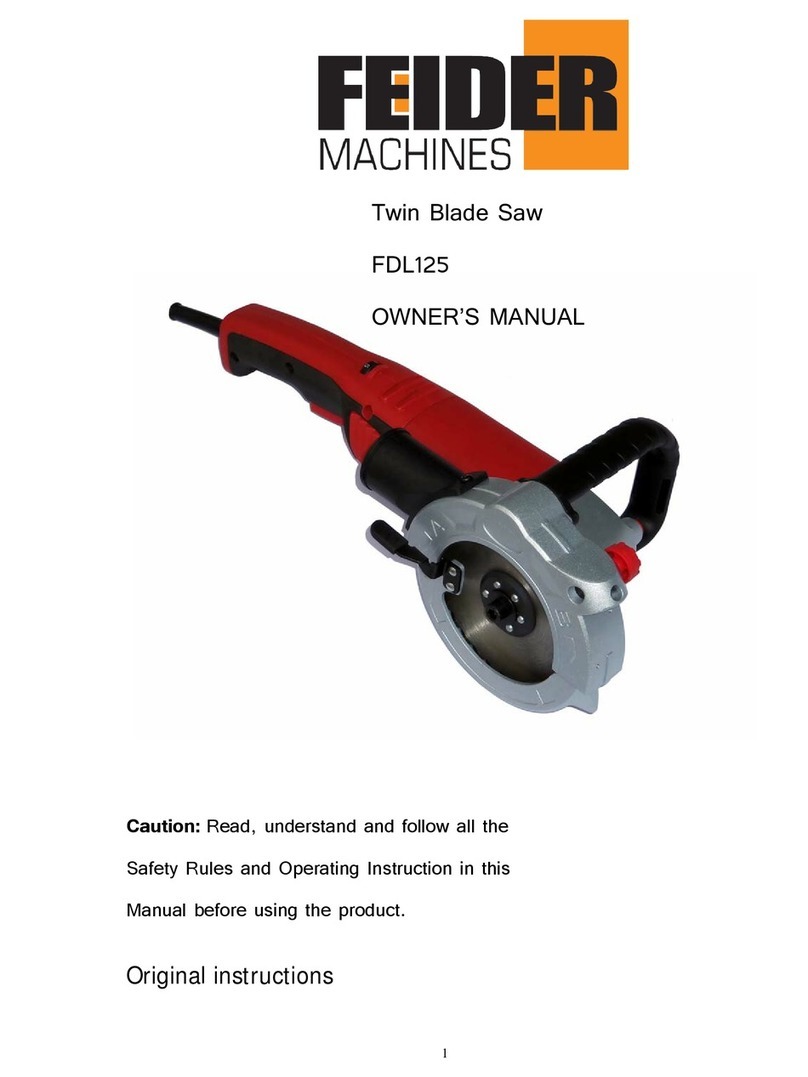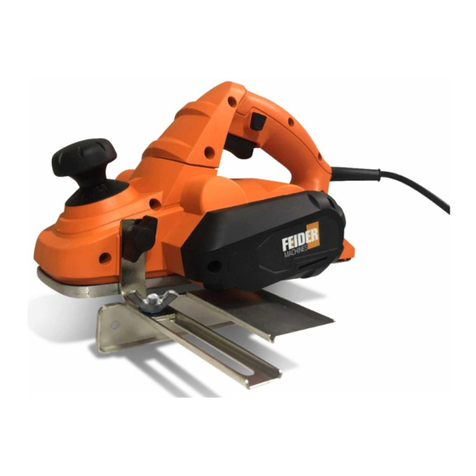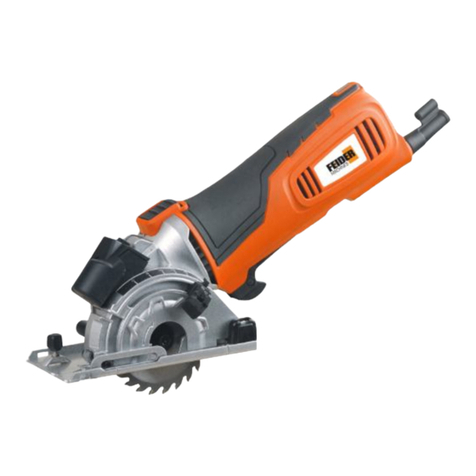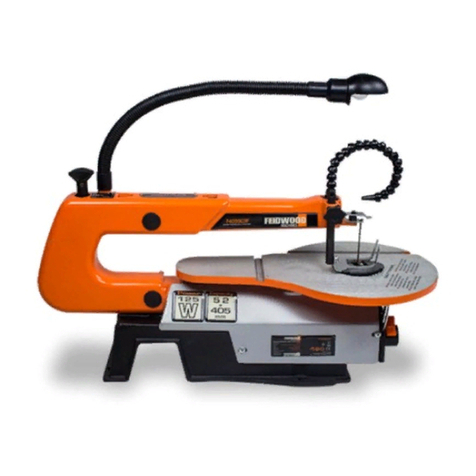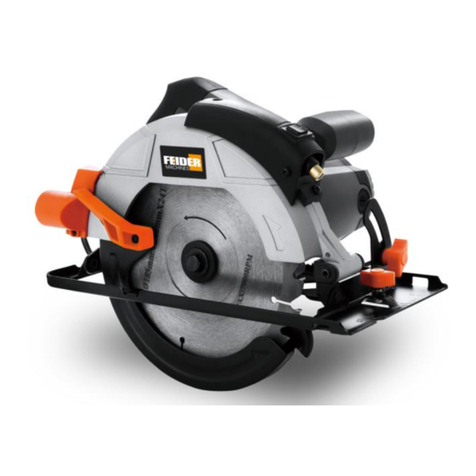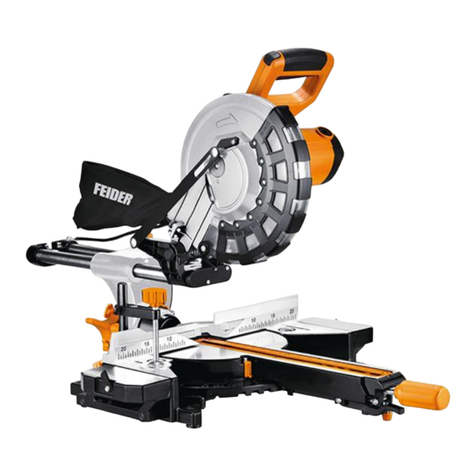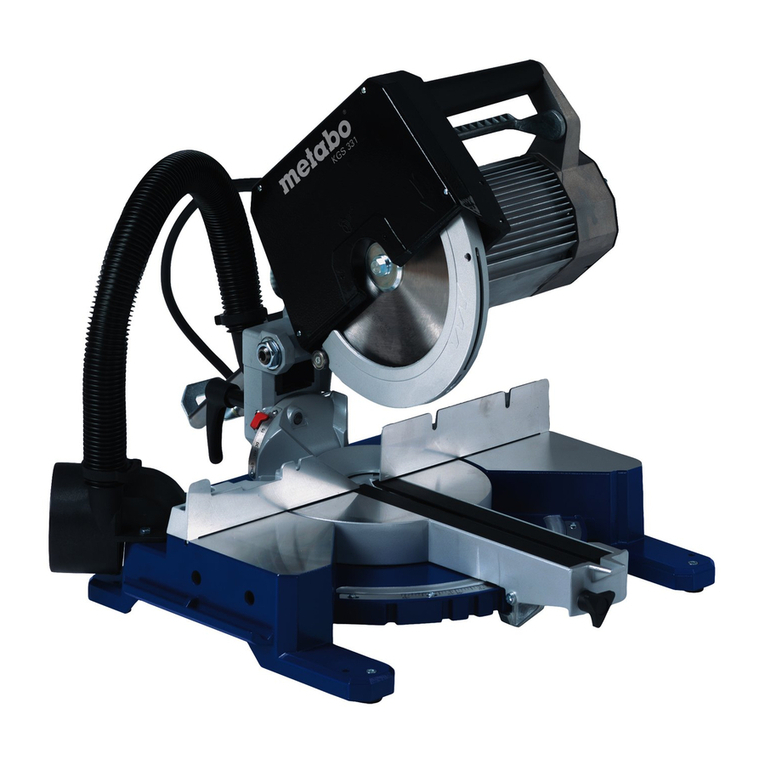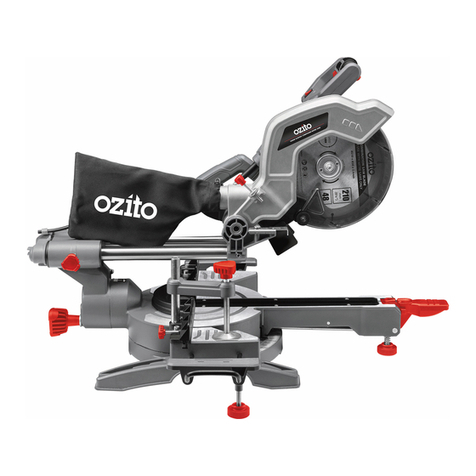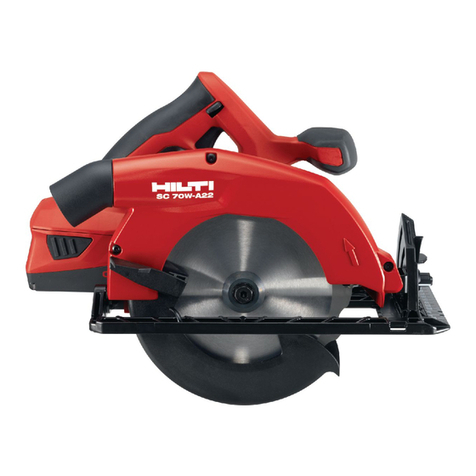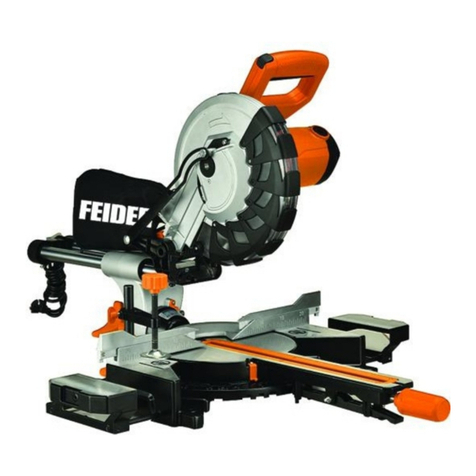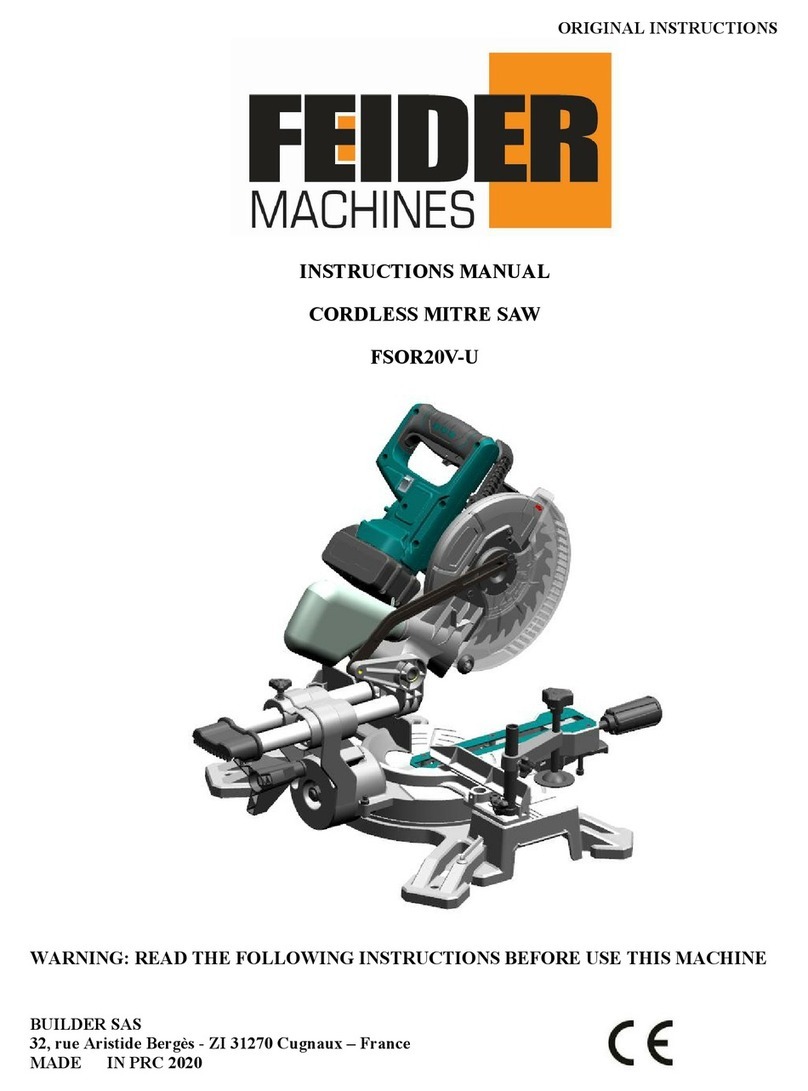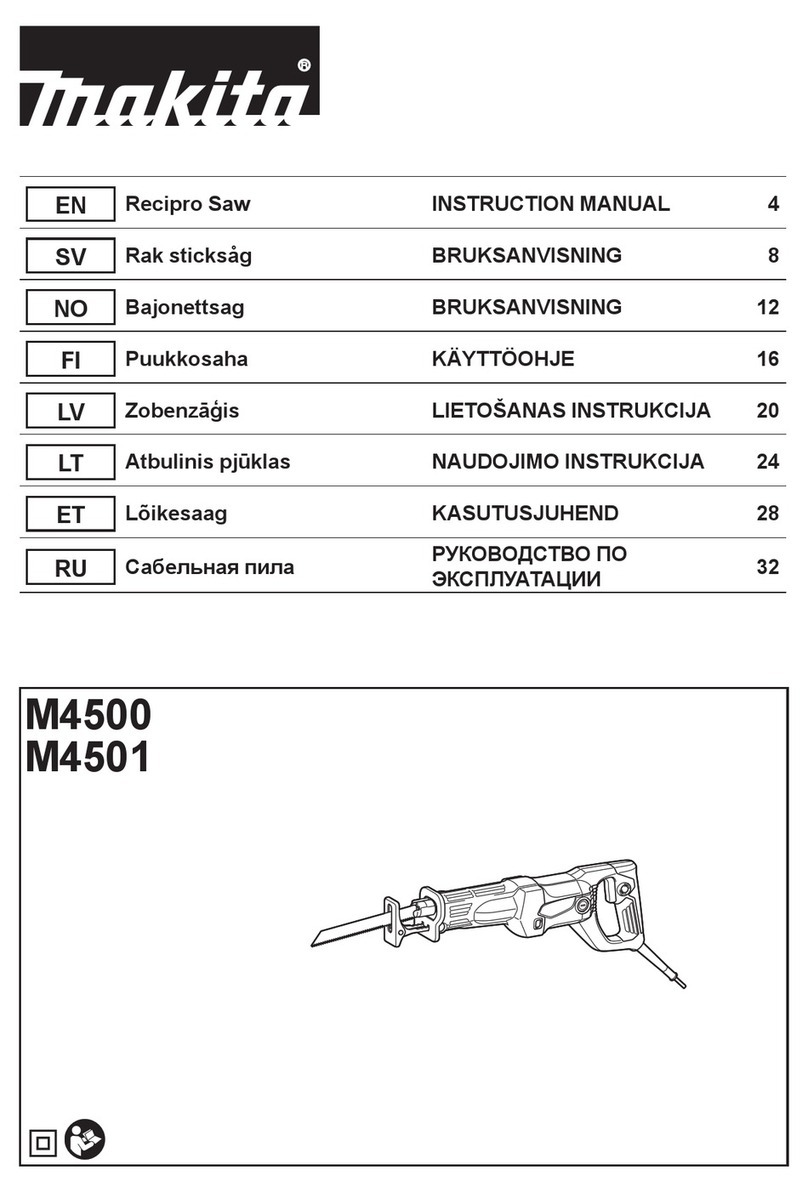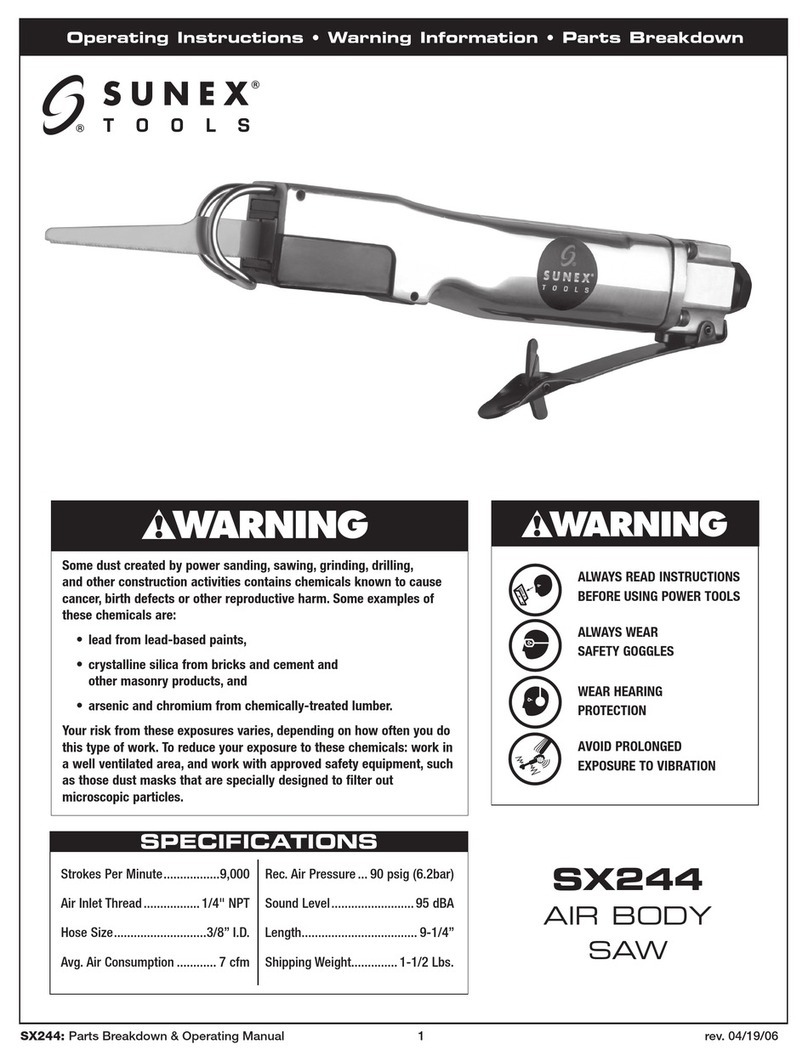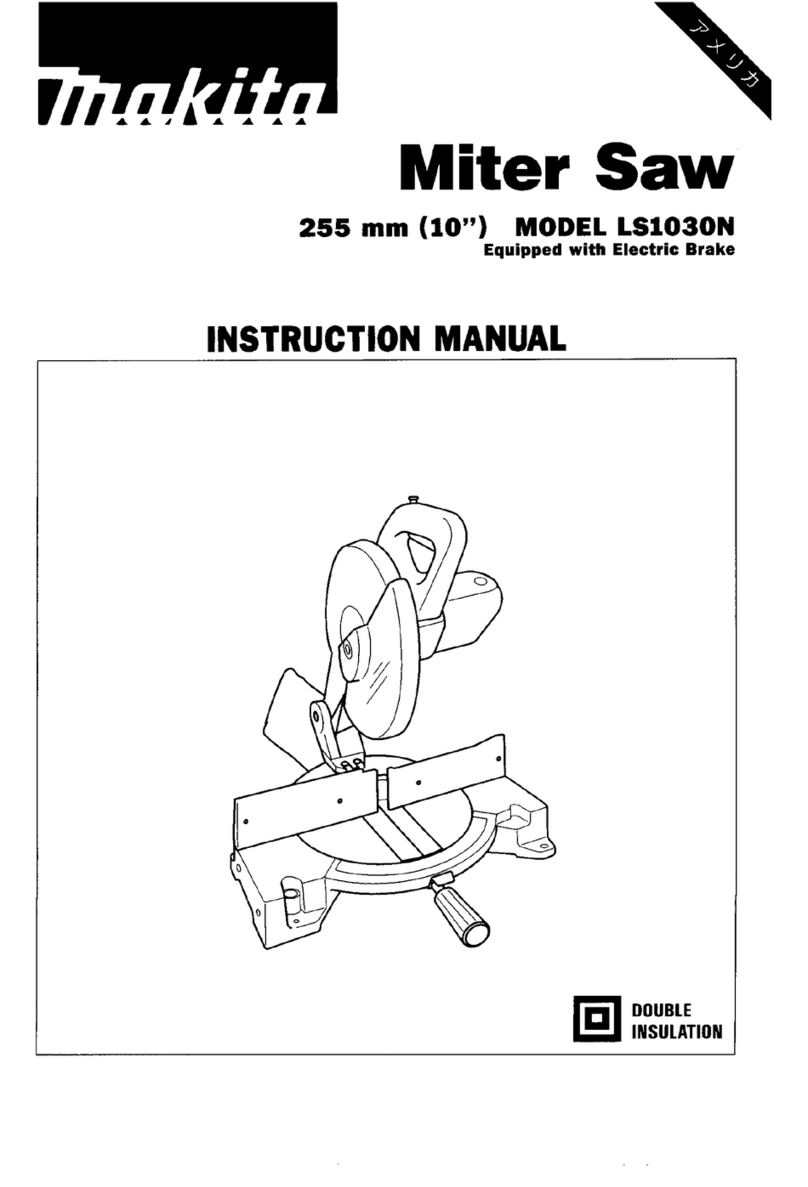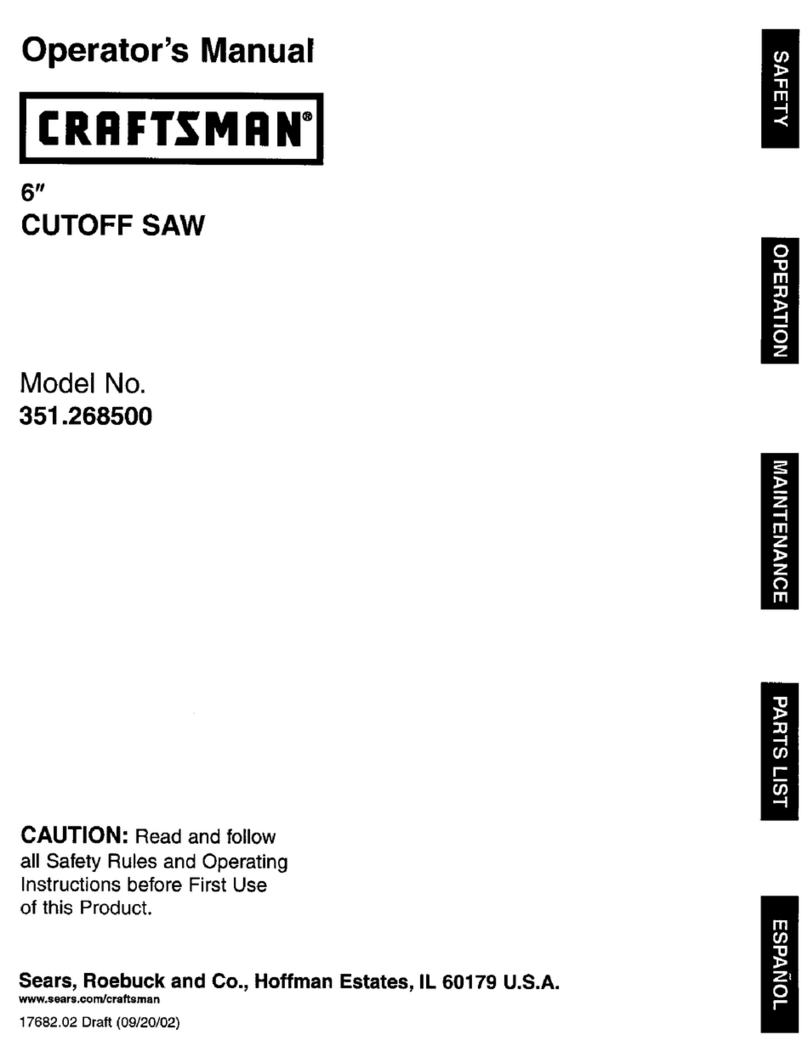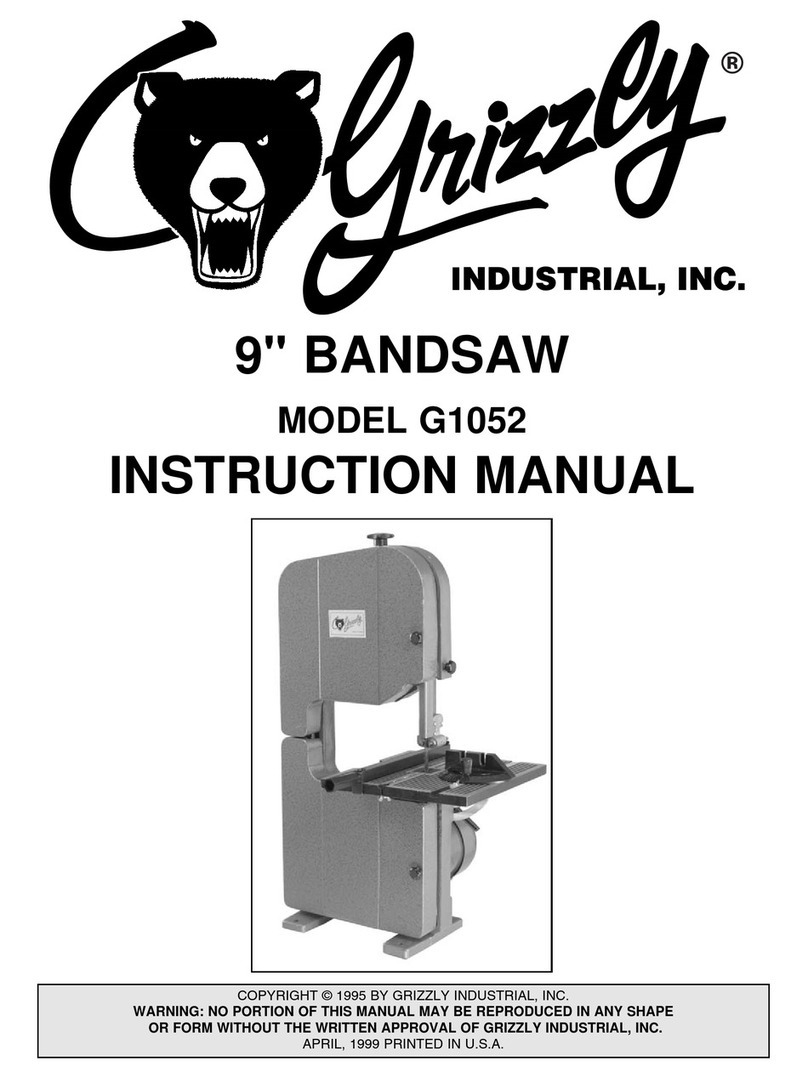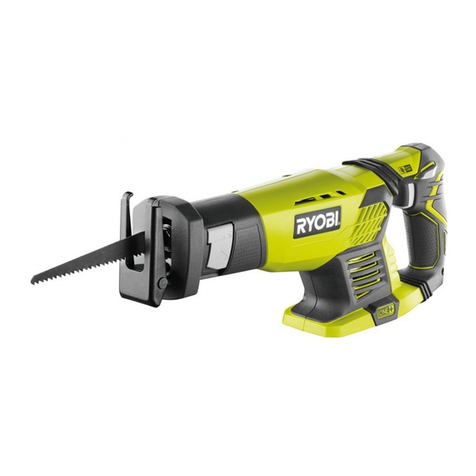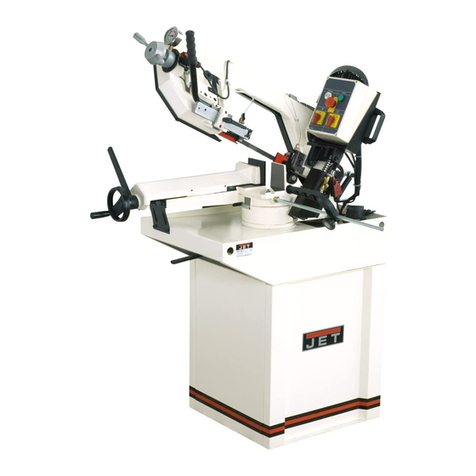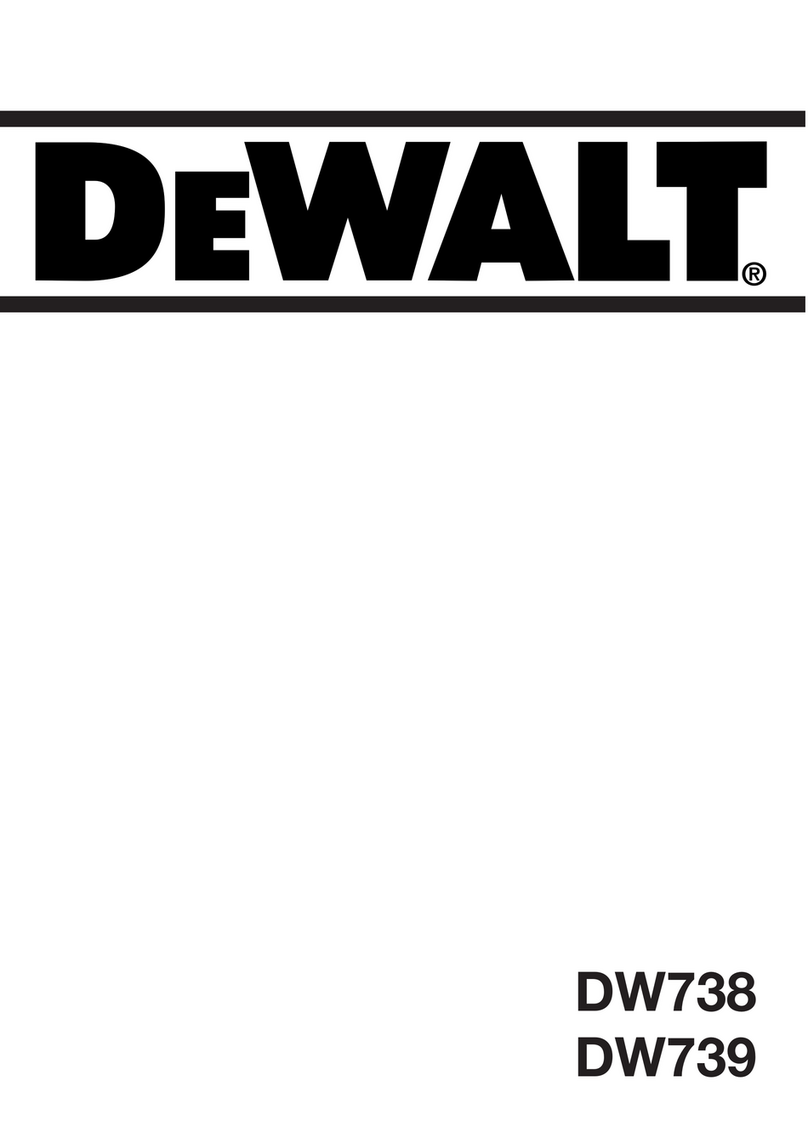
cutting tool may contact hidden wiring or its own cord. Contact with a ”live” wire will also make
exposed metal parts of the power tool ”live” and shock the operator.
f) When ripping always use a rip fence or straight edge guide. This improves the accuracy of
cut and reduces the chance of blade binding.
g) Always use blades with correct size and shape (diamond versus round) of arbour holes.
Blades that do not match the mounting hardware of the saw will run eccentrically, causing loss
of control.
h) Never use damaged or incorrect blade washers or bolt. The blade washers and bolt were
specially designed for your saw, for optimum performance and safety of operation.
SPECIFIC SAFETY RULES FOR TWIN BLADE CUTTING
a) DANGER! KEEP HANDS AWAY FROM CUTTING AREA AND BLADE.
b) Always keep your second hand on auxiliary handle or motor housing. With both hands holding
the saw (machine), they cannot be cut by the blades. Keep your body positioned to either side of
the saw blade, but not in line with the saw blade Hold the saw firmly to prevent loss of control.
c) Do not reach underneath the work. The guard cannot protect you from the blade below the
work.
d) Do not attempt to remove cut material when blade is moving.
e) Always check Lower Guard proper closing before each use. Do not operate saw if Lower Guard
does not move freely and close instantly. Never clamp or tie the Lower Guard into the open
position. If saw is accidentally dropped, Lower Guard may be bent. Raise the Lower Guard with the
Retracting Handle and make sure it moves freely and does not touch the blade or any other part, in
all angles and depths of cut check the operation and condition of the lower guard spring. If the
guard and the spring are not operating properly, they must be serviced before use. Lower Guard
may operate sluggishly due to damaged parts, gummy deposits, or a build up of debris. Disconnect
the plug from power source. Periodically remove the blade, clean the upper, Lower Guards and the
hub area with kerosene and wipe it dry, or blow it clean with compressed air.
f) The Lower Guard should be retracted manually only for making special cuts such as” Pocket
cuts” and “Compound Cuts”. Always Raise Lower Guard by Lower Guard Handle Lever. As soon as
blade enters the material, Lower Guard must be released for all other sawing, the Lower Guard
5




















